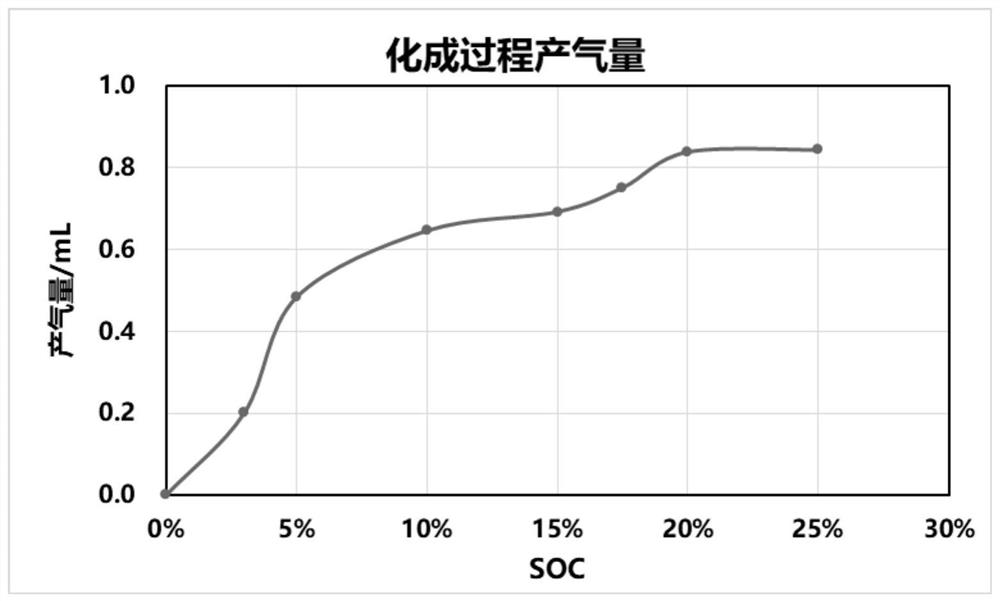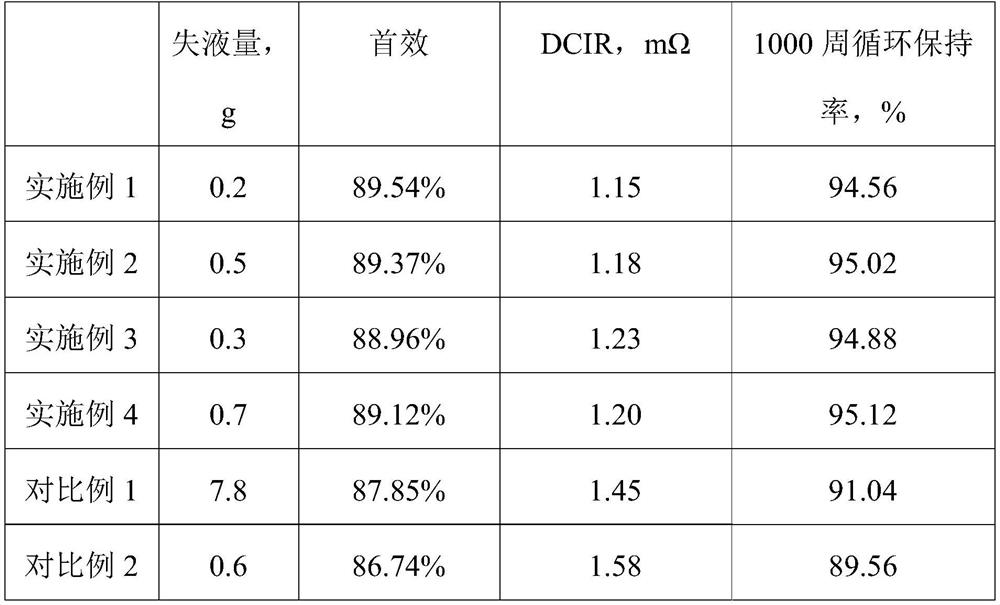Lithium ion battery formation process and lithium ion battery obtained by same
A lithium-ion battery and process technology, applied in the field of lithium-ion batteries, can solve problems such as poor exhaust in the formation process, affect the formation interface, and poor formation exhaust, so as to improve the consistency of self-discharge screening, reduce the amount of liquid loss in formation, The effect of improving the consistency of capacity
- Summary
- Abstract
- Description
- Claims
- Application Information
AI Technical Summary
Problems solved by technology
Method used
Image
Examples
Embodiment 1
[0048] In this embodiment, the lithium-ion battery adopts a small soft-pack battery of high-nickel ternary material; the change curve of its gas production with SOC is as follows figure 1 shown; the test method of the gas production curve is: drainage method; by figure 1 It can be seen that the formation and gas production can be divided into the following three stages:
[0049] Among them, the first stage: when the battery is below 5% SOC, the gas formation rate is faster;
[0050] In the second stage, when the battery is at 5%-15% SOC, the gas formation rate slows down;
[0051] In the third stage, when the battery reaches more than 20% SOC, the formation and gas production gradually stop, and the SEI film is basically formed.
[0052] In this embodiment, the chemical conversion process includes:
[0053] Stand still: After the liquid injection, the high-nickel ternary material small pouch battery is allowed to stand at 45°C and normal pressure for 24 hours; and
[0054]...
Embodiment 2
[0061] The difference between this embodiment and Embodiment 1 is that in the first stage, the negative pressure is -60KPa, and the battery is charged at a constant current of 0.1C to 15% SOC; and
[0062] In the second stage, the negative pressure is -80KPa, and it is charged to 20% SOC at a constant current of 0.12C; and
[0063] In the third stage, the negative pressure is -40KPa, and it is charged at a constant current of 0.32C to a cut-off voltage of 4.2V;
[0064] Other parameters and conditions are exactly the same as in Example 1.
Embodiment 3
[0066] The difference between this embodiment and Embodiment 1 is that in the first stage, the negative pressure is -20KPa, and the battery is charged to 5% SOC at a constant current of 0.05C; and
[0067] In the second stage, the negative pressure is -90KPa, and it is charged to 30% SOC at a constant current of 0.3C; and
[0068] In the third stage, the negative pressure is -20KPa, and it is charged at a constant current of 0.5C to a cut-off voltage of 4.2V;
[0069] Other parameters and conditions are exactly the same as in Example 1.
PUM
 Login to View More
Login to View More Abstract
Description
Claims
Application Information
 Login to View More
Login to View More - R&D
- Intellectual Property
- Life Sciences
- Materials
- Tech Scout
- Unparalleled Data Quality
- Higher Quality Content
- 60% Fewer Hallucinations
Browse by: Latest US Patents, China's latest patents, Technical Efficacy Thesaurus, Application Domain, Technology Topic, Popular Technical Reports.
© 2025 PatSnap. All rights reserved.Legal|Privacy policy|Modern Slavery Act Transparency Statement|Sitemap|About US| Contact US: help@patsnap.com



